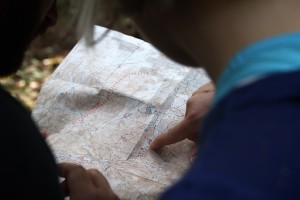How To Act Like a Local When You Travel
Sounds easy: how to act like a local. The problem is: when in Rome, it’s sometimes simply not possible to do as the Romans do, because you can’t figure out what’s going on. This is the sad, humbling, delightful truth of traveling.
Having said that, however, I will also say that Americans traveling abroad are like facelifts in LA: you can only tell the bad ones.
How to Act Like a Local #1: Rethink your wardrobe
Wherever you are in the world, the best way to fit in is to not dress like a sport-sloppy American in casual wear. Don’t kid yourself that what you wear to the gym or to do errands is what you need to pack because these clothes are comfortable, don’t wrinkle, can be rinsed out in a hotel room, etc. etc.
Of course you want comfort when you travel. Decent, well-fitting clothes can be comfortable, too.
Most women aren’t going to travel wearing high heels (although I’m sure some do). However, Nikes aren’t your only alternative. Invest in long-wearing, nice-looking footwear.
Carry all your valuables (credit cards and passport) in a sleeve worn inside your clothing, such as a travel belt. Then carry a nice purse with a long enough strap to wear cross-wise on your body. In other words, no fanny packs or travel pouches worn about your neck.
When you dress like you have a job in the place you’re traveling and you’re on the street, you’re less likely to be a target for unscrupulous taxi drivers or guides wanting to show you around. You’re more likely to be asked directions.
It’s amazing how often I’m asked for directions. I must look unthreatening. Maybe I also look like I know where I’m going, when a lot of the time I don’t. My ability to give directions on a worldwide basis is probably around 50%. In Paris or Bucharest the percentage goes way up. In Ulan Bator, Mongolia it was pretty low.
How to Act Like a Local #2: Look Like You Know Where You’re Going
Study the map of the city before you go out in the street. Or just wander around for an hour or two to get your bearings then, when you return to your room, trace your path on the map.
Of course you’ll carry your map, and there will be times you absolutely have to pull it out if you’re seriously lost, but many people think the moment to study the map is when they’re on the street. Nope, not what locals do. Neither do they navigate with their phones.
How to Act Like a Local #3: Establish yourself
Even if you’re somewhere only a short period of time, pick out a restaurant to frequent as often as possible. I’ll take good atmosphere and friendliness over a good menu. Naturally, I don’t want the food to be bad, but if you find a friendly restaurant, you can ask for recommendations for things locals like to do.
Find out the tipping customs. Sometimes you can’t determine them in advance, so you have to ask when you arrive. As a traveler, you need a lot of services. You ease your way when you understand the currency, especially if it’s one with a lot of zeroes in exchange with the dollar. You don’t want to give a couple lari to a porter in Tblisi, Georgia because it doesn’t mean much, but you can give a couple euros to a porter in the Eurozone.
How to Act Like a Local #4: App ahead
Download a currency exchange app. Always add the new one before arriving.
How to Act Like a Local #5: Rethink politeness
Don’t assume your notions of politeness match local notions of politeness. Americans are prone to expressions of thanks, often repeated. It works for us in our own culture. However, excessive thanking behaviors can be odd in other cultures.
Same goes for smiling. I suggest: Smile less. Appear friendly, of course.
Even when speaking the local language, avoid formulating phrases such as “May I please have ….?” “Can I have …?” “Can I buy ….?” It goes against the grain for Americans, but demand a service, do not inquire if you can have it. Indirect politeness of the American kind is not always clear. In many places making a demand is the correct and polite way to acquire a service.
The local culture will have its own politeness customs. Hang back a bit. Be on the look out for what the customs are. The locals will love you for it.
See also: All My Travel Tips
Want More From Julie? Read her Time Slip Series:
Get the first book: The Blue Hour on Amazon Today!
Categorised in: Adventure, Thoughts, Travel Tips
This post was written by Julie Tetel Andresen
You may also like these stories:
- google+
- comment





